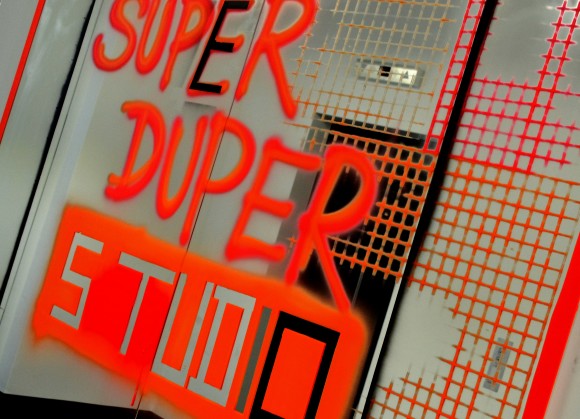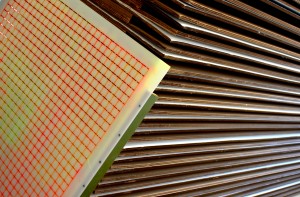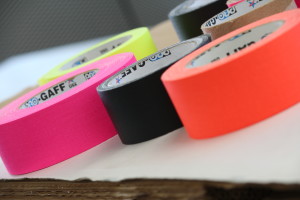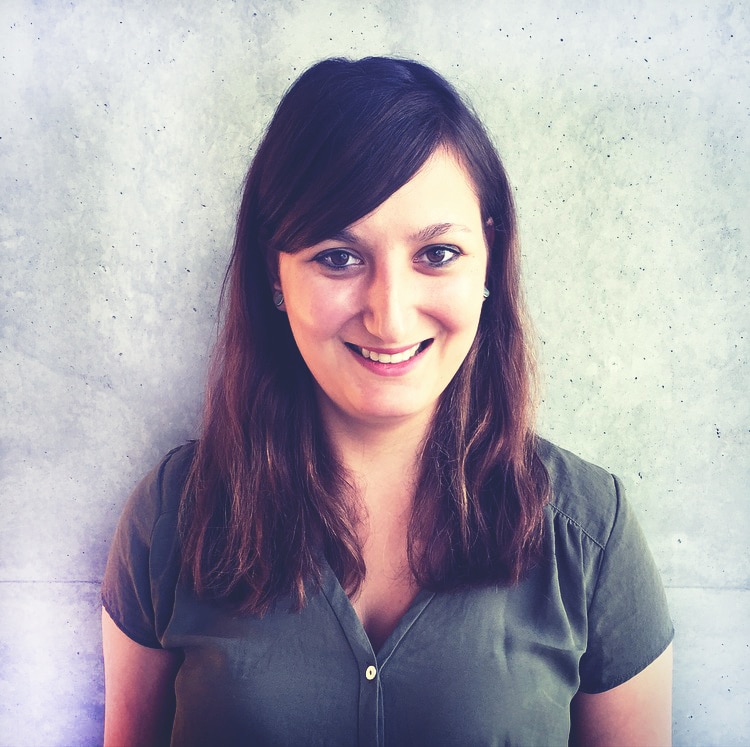CODE_n SPACES: Tobias Rehberger designs "Super Duper Studio" for digital pioneers
What are spray cans, colorful adhesive tape and a giant mirror doing inside GFT’s headquarters? Artist and sculptor Tobias Rehberger, who designed the innovation hall at the first CODE_n CONTEST at CeBIT 2012, has now turned his attention to the SPACES, the latest element in the CODE_n ecosystem. In our interview, he reveals his concept for the design of the space in which startups and established companies from the Stuttgart industrial zone will network in the future. High-profile managers move into the second story of the building; the first floor is reserved for digital pioneers who may have groundbreaking ideas, but who still need space and vital contacts. The CODE_n SPACES are set to change this.

Mr. Rehberger, this isn’t the first time you’ve worked with CODE_n. For the first CONTEST, you designed a trade fair concept that was intended to stay around for a few days and draw attention. With the SPACES, you are now creating a permanent area for young companies. At the same time, the startups are only staying for a finite length of time. What was the idea behind the design of the first floor?
Rehberger: The rooms may be permanently occupied by startup companies, but it’s primarily about flexibility and improvisation; the ability to change something quickly. When I think of startups, I don’t think of carefully planned and organized workflows, in which the next step is already pre-defined. Instead, I’m creating spaces here for people for whom exactly the opposite occurs: Spaces where they can improvise, where they can invent, where they can respond quickly to different situations. This is why we also have the garage element, the unfinished feel.
In the entrance area, the slogan on the mirror is quite eye-catching: Super Duper Studio. The checked pattern on the walls spans the entire floor. What’s behind this?
 Rehberger: In the 1960s and 70s, there was a group of architects from Italy called Superstudio. They developed superstructures with Utopian constructions that covered entire landscapes. These architects used the check pattern as their trademark, because their ideas came from a checked sheet, the draft pad of an architect. This superordinate thing, this superstructure that takes over everything, it matches the philosophy of a startup very nicely. When you’re founding a company, you’re ready to give some things up: The work, the passion for what you do, overtakes all other areas of your life.
Rehberger: In the 1960s and 70s, there was a group of architects from Italy called Superstudio. They developed superstructures with Utopian constructions that covered entire landscapes. These architects used the check pattern as their trademark, because their ideas came from a checked sheet, the draft pad of an architect. This superordinate thing, this superstructure that takes over everything, it matches the philosophy of a startup very nicely. When you’re founding a company, you’re ready to give some things up: The work, the passion for what you do, overtakes all other areas of your life.
So that’s why you also created a kitchen?
Rehberger: Exactly. I’m imaging the early phase of a startup, where there’s a lot of work going on and not much time for other things. Sometimes, you might only sleep for three or four hours a night, and you don’t want to go home to do that. That’s why these spaces will offer more than conventional offices. The kitchen will of course be stocked with essentials such as the coffee maker and microwave. But our vision is also to provide camp beds and machines that provide everything you could need at any time during hectic phases and things that you otherwise wouldn’t find in the middle of the night: caffeine tablets, printer paper, thumb tacks, a toothbrush …
So that the most creative ideas possible can be produced here …?
Rehberger: Young entrepreneurs work on these creative ideas, they don’t have to also design crazily creative spaces here. Instead, it’s about achieving interesting aesthetic results through simplicity and speed. To do this, all of the elements such as spray cans and tape will be stacked in the corridor. The concept represents improvisation: Playful and not too serious, but with a certain amount of edge and fluffiness. For me, it’s all about the participatory aspect: People can get on with things, and adjust the cardboard walls the way they need them to be. The office can be made bigger or smaller, because walls can be quickly removed or rearranged. Everything is possible. You could even cut a hole into the walls …
Where else would you be able to cut a hole in the wall?
 Rehberger: If the hole needs to disappear again, you can simply place a sheet of paper over it, hang something over it with thumb tacks. The walls and doors can also be stuck onto; you can apply your own logo and the next startup can put theirs on top of it. Changes can be made, easily, directly and without any ridiculous technical red tape. We don’t do everything here either; instead, we provide a type of exemplariness, a ‘for instance’. How this might be dealt with in the future – whether someone might say they prefer to wallpaper the inside or leave it all white or whether they want to stick the seams together with sticky tape so that it holds together better – all this is left up to the start-ups. We offer ideas on how to use it. But whether those ideas are followed in the way intended remains a little uncertain. Just like the way in which the world of startups works.
Rehberger: If the hole needs to disappear again, you can simply place a sheet of paper over it, hang something over it with thumb tacks. The walls and doors can also be stuck onto; you can apply your own logo and the next startup can put theirs on top of it. Changes can be made, easily, directly and without any ridiculous technical red tape. We don’t do everything here either; instead, we provide a type of exemplariness, a ‘for instance’. How this might be dealt with in the future – whether someone might say they prefer to wallpaper the inside or leave it all white or whether they want to stick the seams together with sticky tape so that it holds together better – all this is left up to the start-ups. We offer ideas on how to use it. But whether those ideas are followed in the way intended remains a little uncertain. Just like the way in which the world of startups works.
Applicants welcome: Are you an innovation group or a startup looking for the perfect place to work? Or you simply want more information about the application process? Click here.






Comments